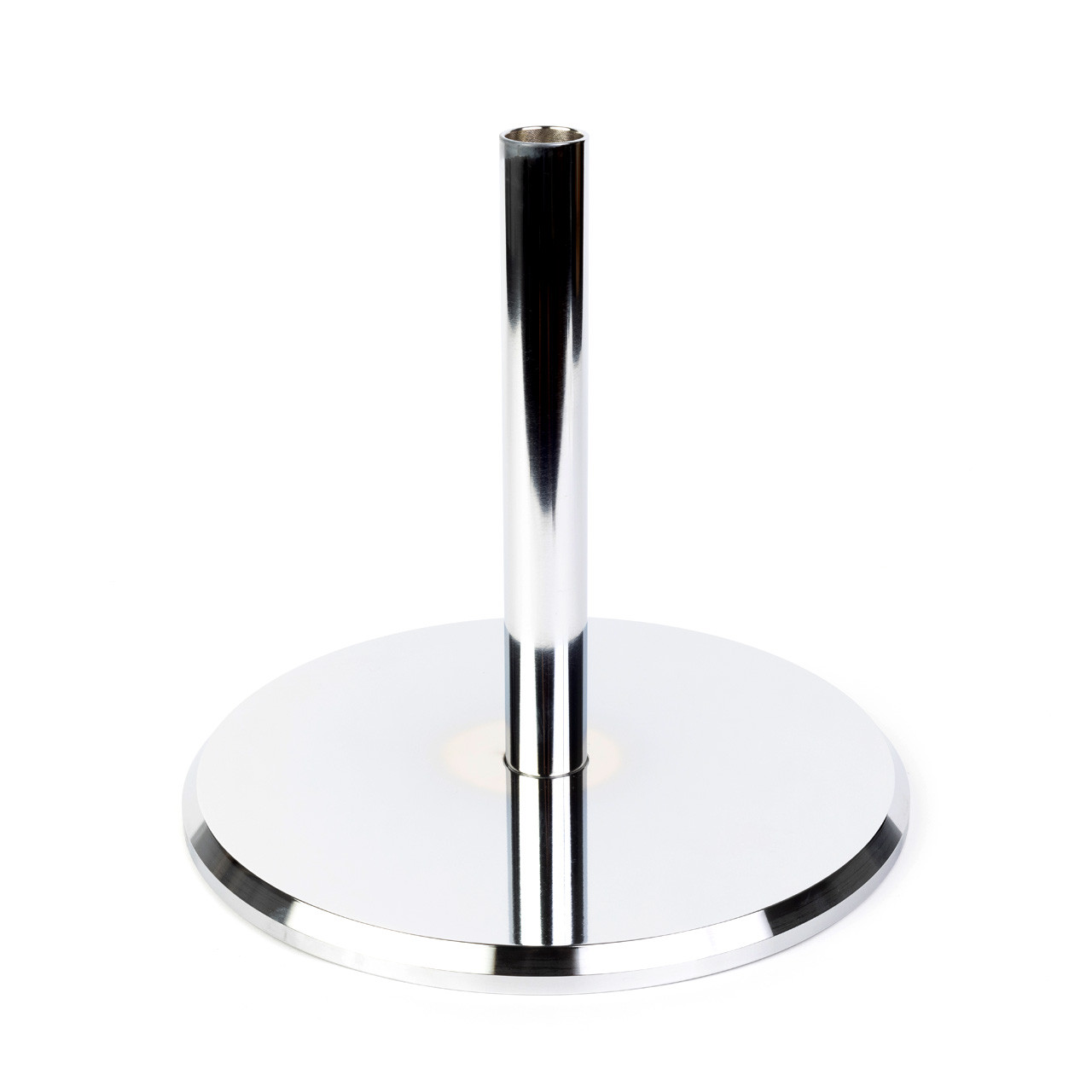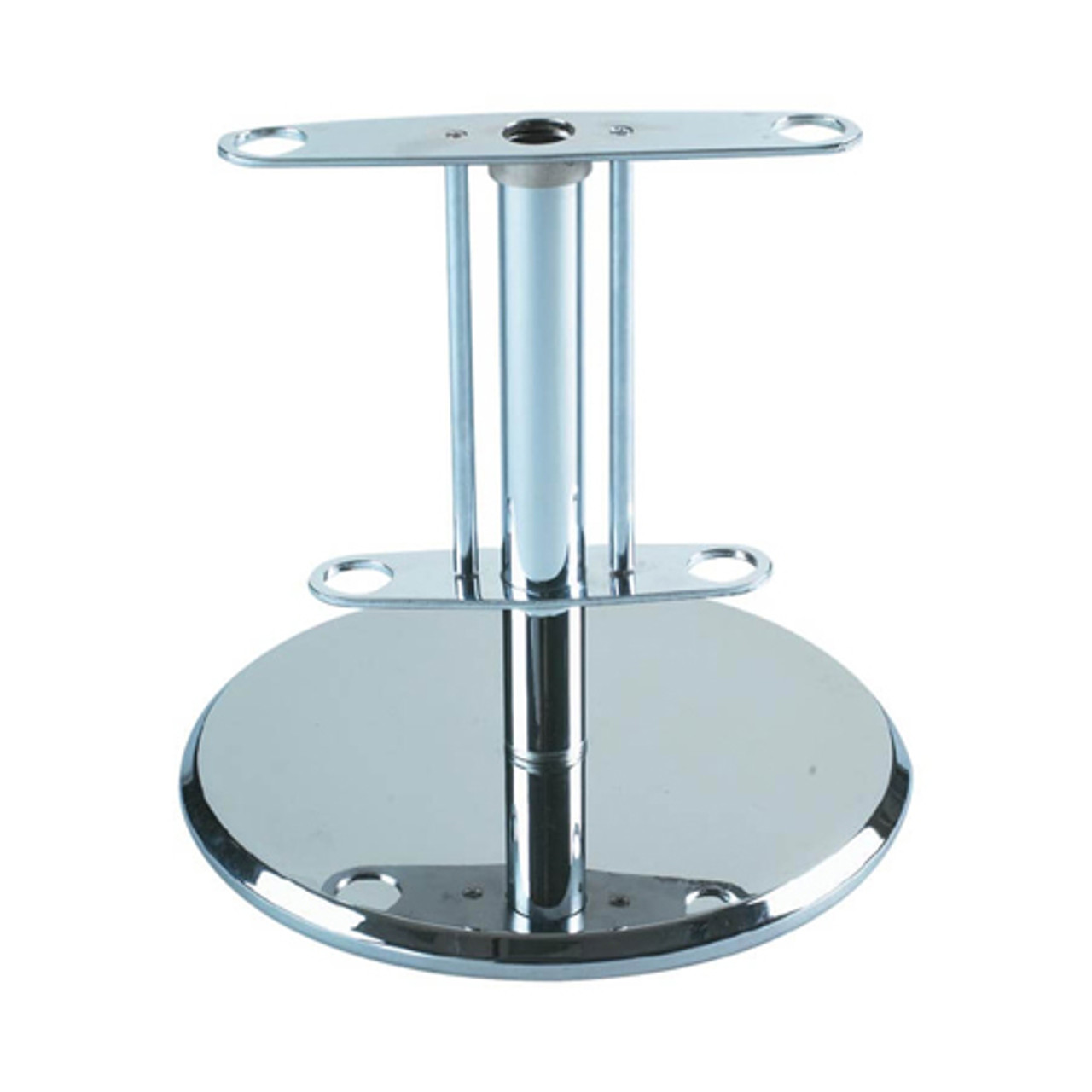Understanding Flag Pole Stand Base Types: Ground vs Portable Options
Nov 7th 2025
The way a flag is displayed says everything about the pride and respect behind it. Whether you’re setting up for a parade, ceremony, or office presentation, the flag pole stand you choose can make or break the display. Too light, and it wobbles. Too heavy, and it’s impractical to move.
If you’ve ever watched a flag tilt during a ceremony or seen it fall mid-event, you know how distracting, and even disrespectful, it can feel. That’s why choosing the right flag pole stand is more than a matter of preference. It’s about stability, dignity, and presentation.
Let’s break down what makes each stand type, ground and portable, unique, and how you can pick the perfect one for your setup.
Why the Flag Pole Stand Matters
A flag pole stand might look like a simple base, but its role is essential. It provides the foundation that keeps the flag upright, balanced, and positioned correctly. Whether indoors or outdoors, it ensures the flag remains visible and stable, even in challenging conditions. The average American flag measures 3x5 feet, weighing about one pound, requiring a stable base to prevent tipping.
For parades, ceremonies, military formations, or schools, this stability represents something greater, respect for the flag and the values it stands for.
When properly chosen, a flag stand also:
- Enhances the visual impact of a flag display
- Prevents safety hazards caused by tipping poles
- Simplifies transport and setup for event crews
- Matches the tone and professionalism of the environment
Two Main Types of Flag Pole Stands
While flag stands come in many designs and materials, they fall into two primary categories, ground-mounted and portable. Each serves a different purpose, and understanding these differences will help you make the best choice.
1. Ground Flag Pole Stand
A ground flag pole stand (also called an in-ground base) is a permanent or semi-permanent installation that keeps the flag firmly in place. It’s ideal for locations where the flag will be displayed continuously, such as government buildings, memorial parks, or outside offices.
Advantages of Ground Flag Pole Stands
- Superior stability: Anchored deep into the ground for strong wind resistance
- Low maintenance: Once installed, it requires minimal attention
- Professional appearance: Perfect for permanent or ceremonial flag displays
- Weather-resistant: Designed to withstand heavy use and outdoor conditions
Disadvantages
- Non-portable: Not ideal if you move flags often
- Installation required: Typically involves digging and cementing
- Permanent placement: Harder to reposition once set
Ground stands are the go-to for institutions that value formality and longevity. They reflect strength and commitment, key values for schools, government agencies, and veterans’ organizations.
2. Portable Flag Pole Stand
A portable flag pole stand is a removable base designed for flexibility and mobility. It’s widely used for parades, indoor ceremonies, schools, trade events, and temporary setups.
These stands come in different weights, often made from cast iron, steel, or heavy plastic filled with sand or water for extra balance.
Advantages of Portable Flag Pole Stands
- Easy transport: Ideal for groups that move from one event to another
- Quick setup: No installation, just place and insert the pole
- Versatile design: Works on multiple surfaces
- Adjustable options: Some models can fit various pole diameters
Disadvantages
- Less wind-resistant: Not as stable outdoors in harsh weather
- Maintenance needed: Must be checked before every event for balance
- Wear over time: Moving parts may loosen with frequent use
For marching bands, color guards, and schools, a portable stand offers the freedom to perform anywhere without compromising on presentation.
Key Factors When Choosing a Flag Pole Stand
No two events or display needs are alike. Before choosing a stand, consider these important factors:
- Location - Indoors, outdoors, or both?
- Ground stands are better for outdoors.
- Portable stands work best indoors or for short-term displays.
- Flag Size and Weight - A larger flag requires a heavier base.
- Always match the pole diameter to the stand opening.
- Frequency of Use - Permanent setups demand durability.
- Mobile setups require portability and easy assembly.
- Material Preference - Clarino-finish metal bases look ceremonial, while black cast-iron options fit multi-purpose events.
- Budget and Longevity - Investing in quality pays off through stability, reduced wear, and professional appearance.
Material Options for Flag Pole Stands
- Cast Iron: Traditional, strong, and suitable for indoor ceremonies.
- Steel or Aluminum: Lightweight, corrosion-resistant, and polished in finish.
- Plastic Fillable Bases: Best for temporary outdoor events.
- Wooden Stands: Used in heritage or historical displays for classic aesthetics.
Each material type serves a visual and practical function. For instance, government offices prefer metal bases for their formal look for floor stands, while marching groups often choose fillable bases for flexibility.
How to Maintain a Flag Pole Stand
Proper maintenance not only extends the life of your flag pole stand but also upholds the dignity of your flag.
- Inspect before each use: Check screws, fittings, and pole inserts.
- Clean regularly: Wipe down metal stands to prevent rust and dust buildup.
- Store correctly: For portable stands, store in dry, padded cases.
- Check weight distribution: If using fillable stands, ensure even filling with water or sand.
Regular attention keeps the base sturdy and your flag display flawless.
When to Replace a Flag Pole Stand
If your stand begins to wobble, shows cracks, or doesn’t hold the pole firmly, it’s time for an upgrade. Also, if your flag setup has changed, say, larger poles or outdoor installations, your base must match the new specifications for balance and safety.
Conclusion
Choosing the right flag pole stand isn’t just about holding a flag, it’s about upholding tradition, pride, and professionalism. Whether you need a sturdy ground-mounted base for permanent display or a portable option for your next parade, understanding the difference ensures your flag stands tall and true in every setting.
From military events to public ceremonies, Glendale Parade Store offers dependable options built for honor and precision. When the flag matters, the foundation matters even more.
FAQs
1. What is the best type of flag pole stand for outdoor use?
Ground flag pole stands are ideal for outdoor displays. They provide long-term stability and withstand wind, rain, and temperature changes. Once installed, they require little upkeep. For permanent displays at schools, memorials, or offices, ground-mounted options ensure your flag stays upright and dignified in all conditions.
2. Are portable flag pole stands durable enough for frequent events?
Yes, modern portable flag pole stands are built with reinforced materials like steel or weighted bases for strength. They’re easy to transport and ideal for parades or school ceremonies. With proper care and maintenance, they can last for years without losing balance or visual appeal.
3. Can one flag pole stand fit different pole sizes?
Some stands have adjustable fittings, allowing them to accommodate different pole diameters. However, for the best stability, use a stand designed for your specific pole size. If you use multiple flags, consider buying separate stands for each to maintain balance and prevent tilting during use.
4. How heavy should a flag pole stand be?
The weight depends on your flag size. For small indoor flags, 5–10 pounds is enough. Outdoor flags often require 20–50 pounds for stability. A heavier flag pole stand prevents tipping, especially in wind or crowded spaces, ensuring your display remains professional and secure.
5. How do I maintain my flag pole stand for long life?
Clean regularly with mild soap and water. For metal bases, apply rust-resistant polish once a year. Store indoors when not in use. Check hardware and replace any loose or rusted screws. Proper maintenance keeps your flag pole stand reliable and looking ceremonial for years.


 Buy Military Floor Stand (for 1 Flag)
Buy Military Floor Stand (for 1 Flag) Buy Military Floor Stand with Adapter (for 3 Flags)
Buy Military Floor Stand with Adapter (for 3 Flags)